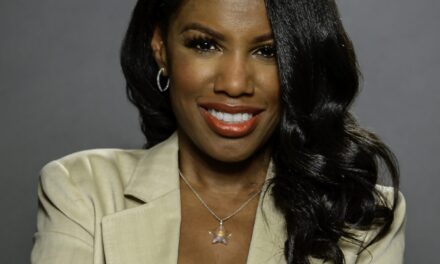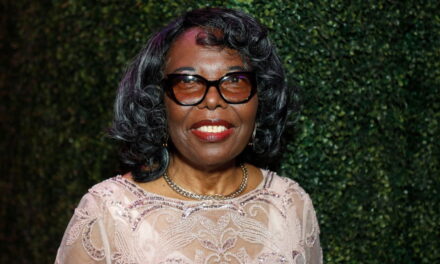- Sharawn Tipton is LiveRamp’s top people and culture exec and part of BI’s Workforce Innovation board.
- She highlights the value of AI and a diverse workforce for companies navigating rapid change.
- This article is part of “Workforce Innovation,” a series exploring the forces shaping enterprise transformation.
Thanks for signing up!
Access your favorite topics in a personalized feed while you’re on the go.
By clicking “Sign Up”, you accept our Terms of Service and Privacy Policy. You can opt-out at any time by visiting our Preferences page or by clicking “unsubscribe” at the bottom of the email. 

Business Insider’s “Workforce Innovation” series features an advisory board of experts, convened from a wide variety of roles and industry verticals, to talk about driving positive outcomes across four key change drivers — artificial intelligence, diversity, equity, and inclusion, worker well-being, and C-suite transformation.
Sharawn Tipton is the chief people and culture officer at LiveRamp, a data-collaboration software-as-a-service company, overseeing human resources and culture across 1,400 employees globally.
Tipton’s remit also includes real estate, which is not typical for a chief people officer — but it makes sense in a post-COVID world.
“A lot of what I’ve been doing is studying trends around when do people come into the office, how are they using the office,” Tipton said. She said the purpose of the office now was primarily “collaborative communication, conversations that have to be face-to-face,” like performance management, collaboration, or celebration.
“Before COVID, the office was used primarily as a workspace. We don’t see our team members using it that way now,” Tipton added.
Tipton spoke with BI about how companies need to evolve to help people adapt to rapid transformation and to make sure nobody is left behind.
The following has been edited for length and clarity.
What fuels your focus on workforce transformation?
I am passionate about bringing out the full potential within everyone. I want everyone to have the opportunity to do the best work of their lives. If you aren’t prepared, you won’t be able to do that.
Growing up in Oakland, California, a lot of the people in my environment had big dreams and passions, but they weren’t equipped to step into them.
As we think about the future of work and AI and how that’s going to accelerate us, it’s important to think about who it is going to help and who it’s going to hurt based on how things work today. I see a real gap when you look at folks like myself, those that are underrepresented. I’m very passionate about all people, but I want to make sure that everyone understands what this shift means, what they can do to prepare themselves.
One of the greatest accelerators of change is corporations, so as corporations, we have a real responsibility to make sure that all people are ready, that everyone has the opportunity to step into those big, beautiful goals, and they’re able to use their passion. That is what fuels me.
How do you help employees see the possibilities of AI and get past the fears of disruption?
We need to move past the fear of “what if” and think about the upsides and possibilities, and how we can prepare to step into them.
One example is one large company that said, “If you can find a way to automate your job, we will train you for a new job. That is our commitment to you.”
That’s how we have to think about this. Instead of telling our team members not to use ChatGPT and putting all this governance around it, we want to hear how they are thinking about using it. What are the opportunities that we aren’t seeing so that we can exploit them and innovate faster, while also thinking about how to mitigate risk?
I understand there’s a risk component, but we can’t be afraid of the change. We need to embrace it. We need to be open and honest with our team members about what this means for them. If their skills are becoming obsolete, we need to get on top of that now. We need to be future-focused and bring team members along on that journey.
How can companies evolve the C-suite leadership to meet the needs of the workforce now?
Nothing trumps great leadership. There are so many things a company can do, but your leadership is really what is going to allow you to hit your company objectives. I think there is an opportunity for us to build better leaders.
There are some skills I think that are innate within you, but it’s like any craft. It’s something that you practice and evolve.
At LiveRamp, we’ve been partnering very closely with the Table Group to really hone in on what authentic leadership leading through challenging times looks like. What are our values collectively as an organization but individually as leaders as well? What are the synergies there, and how do we utilize that to bring out the very best in our team members?
Companies need to assess their leadership capabilities and where they have gaps. I know it’s unpopular to focus on the soft skills, but the soft skills are really the hard skills. That is what’s going to make all the difference.
What other initiatives are you undertaking to manage this rapid change?
We remain committed to diversity and inclusion. I know the more diverse your workforce is, the better vantage point you’ll have to see around corners and be prepared for these changes. If you have this monolithic culture, you’re not going to be able to see the gaps.
A lot of what we’re doing is we’re thinking about our products and how we infuse them into AI capabilities. Our products serve our customers, and our customer base is very diverse. We need that diversity within our workforce to understand what it is that those customers are seeking.
We’re continuing to partner with the National Society of Black Engineers and Women in Product. We’re leveraging external organizations and expertise so we can continue to build those relationships and funnel in that talent because we know that that is a competitive advantage for us.
Approximately 50% of our workforce is remote right now. So we have initiatives around connectivity and how you hold on to that collaboration. That’s where you spark the best ideas, core to who we are. While we are embracing remote work, we’re also saying we have to intentionally build in the space and time for team members to get together in person for that collaboration.
${text} ` ); } if ( document.querySelector(“.gi-sponsor-module”) && document.querySelector(“.post-meta”) ) { document.querySelector( “.post-meta” ).innerHTML = ` ${seriesTitle} `; }]]>




